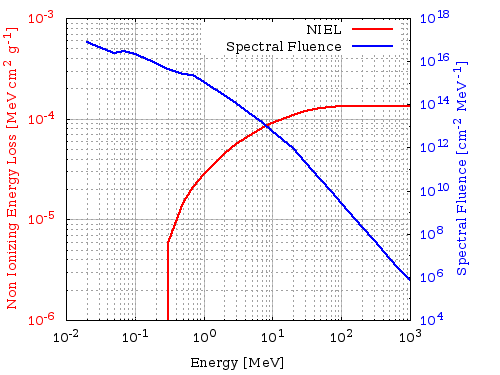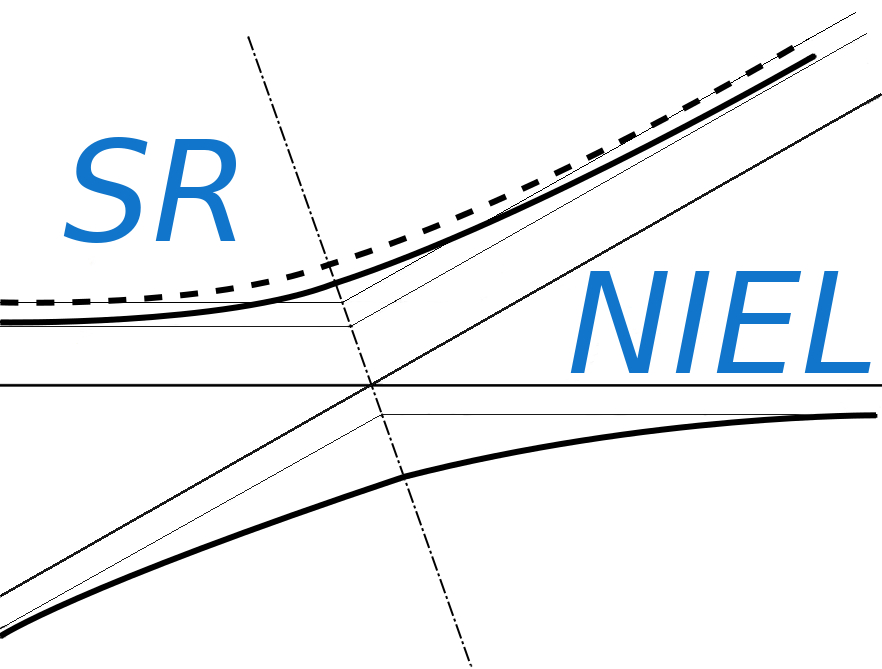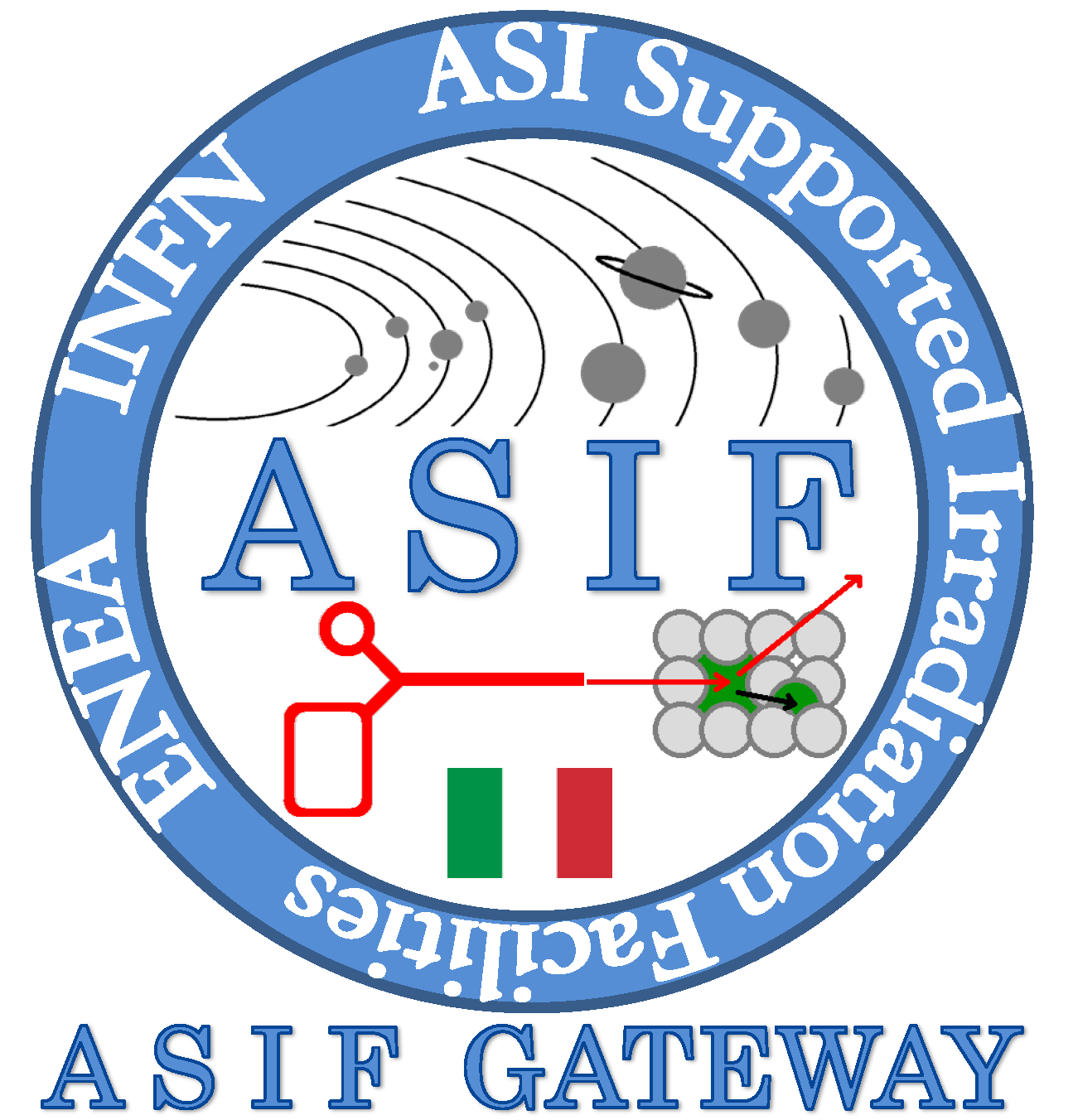 Spectral fluence data are calculated with JOREM Model implemented in SPENVIS assuming a 4π solid angle exposure.
Spectral fluence data are calculated with JOREM Model implemented in SPENVIS assuming a 4π solid angle exposure.
- Ga: 21.5 eV, As: 21.5 eV as reported in [Campesato et al. (2019)] from proton, electron and neutron irradiations of solar cells. In Triple Junction solar cells, in which the dominat damage mechanism is that one due to the GaAs middle junction, a commonly effective value of Ed was 24 eV [Campesato et al. (2018), Campesato et al. (2019)].
- Ge: 40.5 eV as reported in [Campesato et al. (2019)].
- In: 43 eV, Ga: 21 eV, P: 21 eV as reported in [Campesato et al. (2018)] for In0.49Ga0.51P single junction solar cells irradiated with electrons and protons. In [Campesato et al. (2019)] with electron, proton and neutron irradiation, it was shown that a commonly effective value of Ed=38 eV can be employed in an equivalent way.
 The overall results is that the NIEL and the Nuclear Stopping power are affected by the form factor. Numerical results for 183 MeV electrons in In are presented in the following table:
The overall results is that the NIEL and the Nuclear Stopping power are affected by the form factor. Numerical results for 183 MeV electrons in In are presented in the following table:



